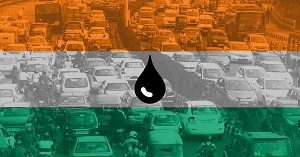 The rapid growth in India is set to support the global energy industry at a time demand growth for oil elsewhere is slowing. From petrol pumps and refineries to pipeline infrastructure and drilling rigs, in the past four years state energy companies have spent more than $30bn alone in the oil and gas sector, government data show. Deloitte estimates $345bn in investment is needed to meet expected demand by 2030, creating more room for foreign players. With its swelling middle class, an expanding manufacturing sector and a youthful, increasingly urban population of 1.3bn, India is primed to overtake China as the top driver of oil demand growth by the mid-2020s. Demand for petrol and diesel is rising alongside consumption of modern cooking fuels and electricity and Prime Minister Narendra Modi has launched policies to boost energy access to support high levels of economic growth.
The rapid growth in India is set to support the global energy industry at a time demand growth for oil elsewhere is slowing. From petrol pumps and refineries to pipeline infrastructure and drilling rigs, in the past four years state energy companies have spent more than $30bn alone in the oil and gas sector, government data show. Deloitte estimates $345bn in investment is needed to meet expected demand by 2030, creating more room for foreign players. With its swelling middle class, an expanding manufacturing sector and a youthful, increasingly urban population of 1.3bn, India is primed to overtake China as the top driver of oil demand growth by the mid-2020s. Demand for petrol and diesel is rising alongside consumption of modern cooking fuels and electricity and Prime Minister Narendra Modi has launched policies to boost energy access to support high levels of economic growth.
Although India is one of the largest energy consumers, on a per capita basis it is one of the lowest — at just 0.62 tonnes of oil equivalent per person — a third of the global average. But to achieve these developmental targets more oil for transport and chemicals is required as well as gas, coal and renewables for power generation. That demand means energy majors, such as Royal Dutch Shell, BP and Saudi Aramco, which want to maintain their fossil fuel businesses while entering new markets for cleaner fuels and chemicals, see the fast-growing Indian market as crucial to sustaining their businesses. Financial Times
